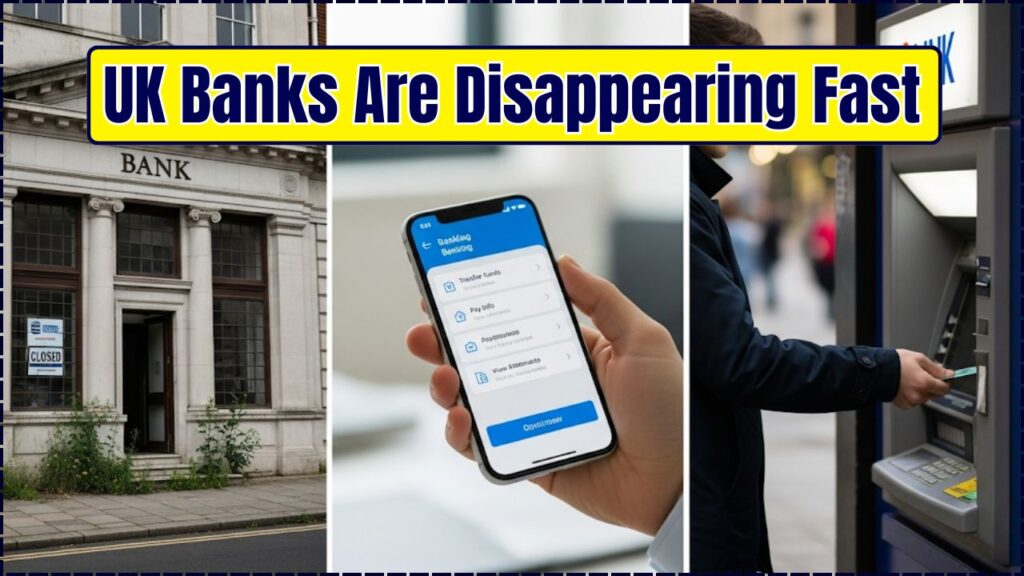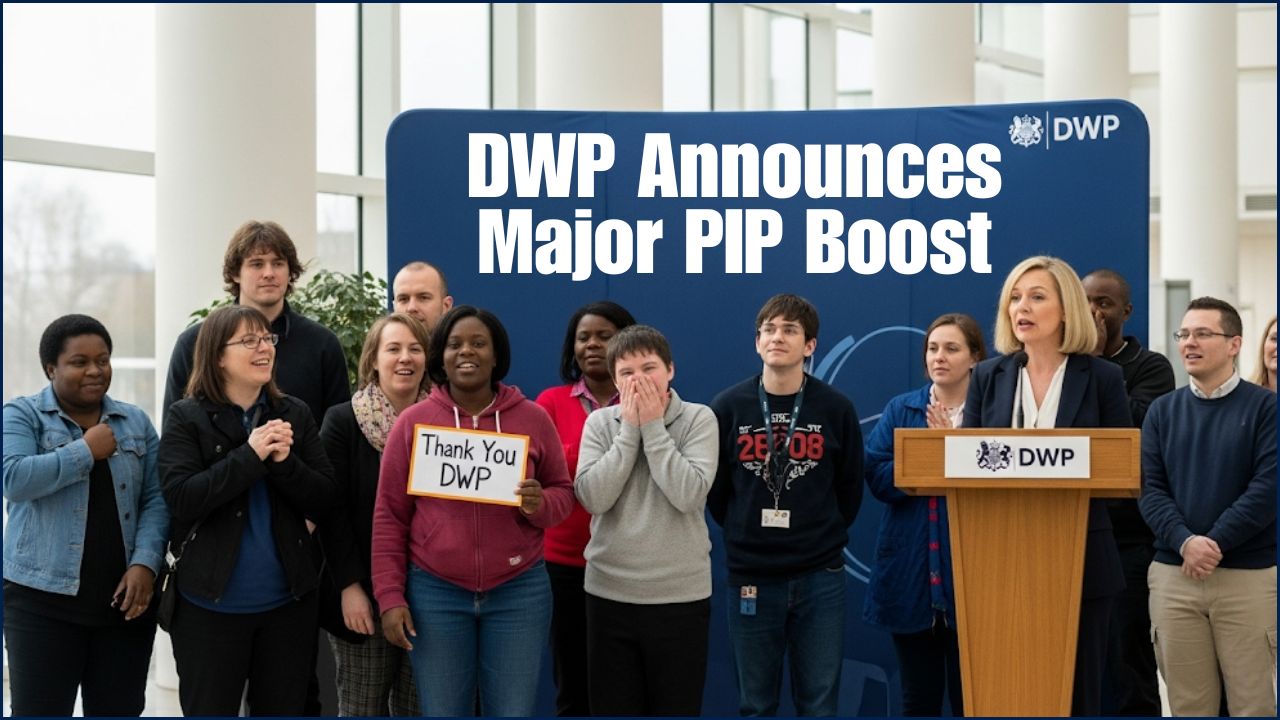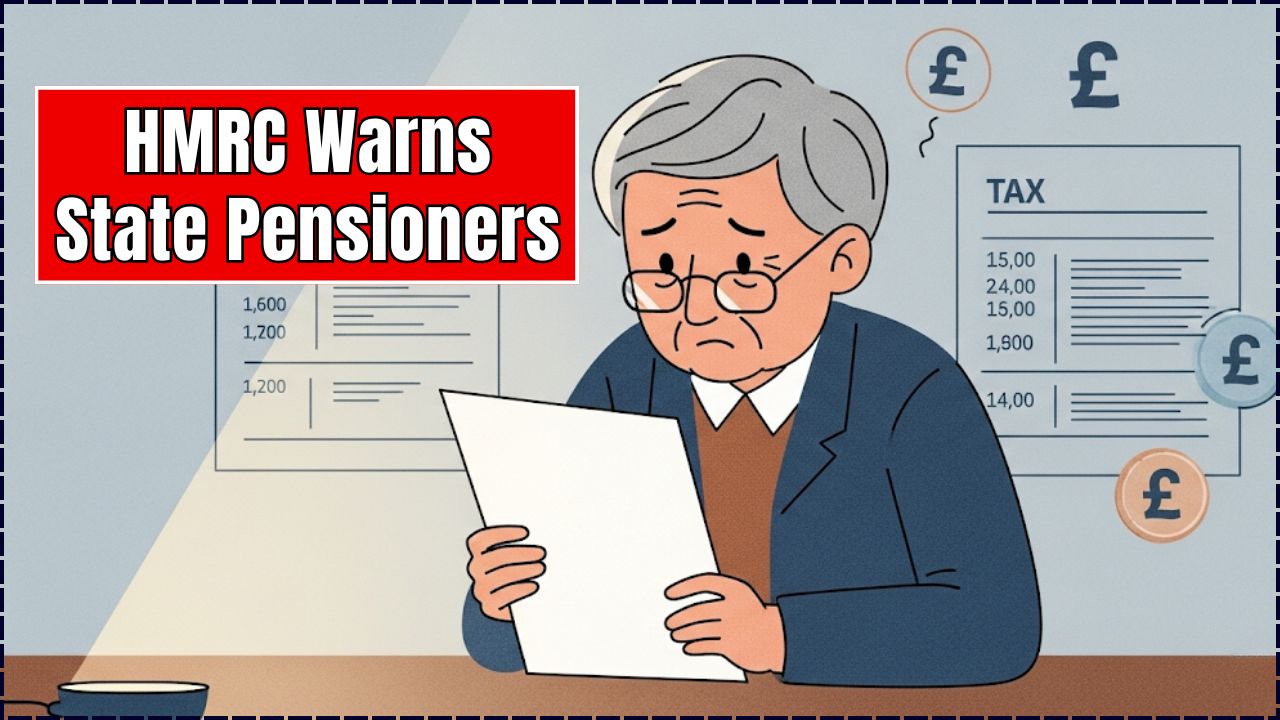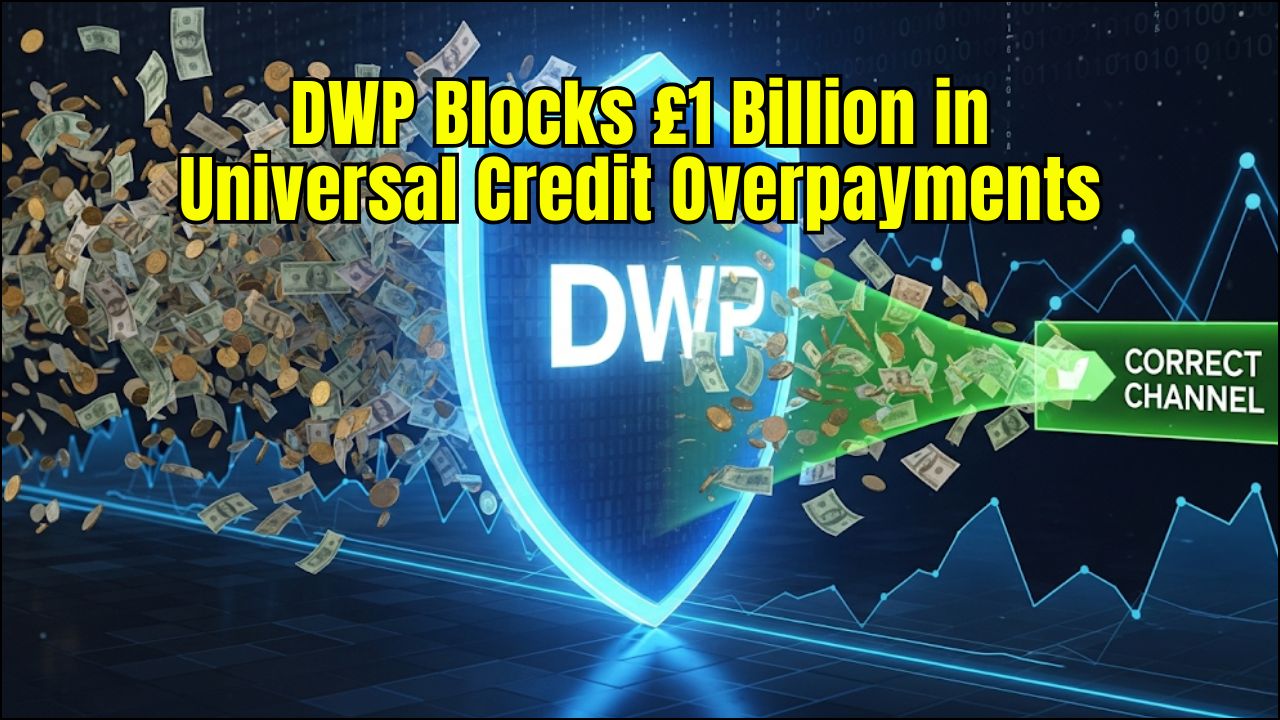If you’ve been following the headlines, you’ve probably seen that UK banks are disappearing fast—with branches shutting down across towns and cities. For some folks, it feels like the end of an era. Remember walking into a local bank, chatting with a teller, and leaving with crisp bills in hand? Those days are fading quicker than a Snapchat streak. But here’s the deal: this isn’t just nostalgia—it’s about cash access, digital security, and how YOU manage money in the future.

The numbers are jaw-dropping. Since 2015, over 6,400 UK bank branches have shut down—that’s nearly two-thirds of the entire network. By mid-2025, another 423 closures had already taken place, with more scheduled before year’s end. On top of that, thousands of ATMs have disappeared too. So what’s really going on, what does it mean for everyday people, and how do you keep your money safe in this new world? Let’s break it down.
UK Banks Are Disappearing Fast
| Topic | Details |
|---|---|
| Branch Closures | 6,443 UK branches closed since 2015 (64% of the network). |
| ATM Access | 7,000 ATMs vanished between 2021–2024; 14% drop overall. |
| Digital Banking Growth | Online banking rose from 33% (2020) to 59% (2024). |
| Who’s Most Affected? | Rural residents, elderly, low-income groups, digitally excluded households. |
| Solutions | 179 community banking hubs open (goal: 350 by 2029). Access-to-Cash laws ensure ATMs within 1–3 miles. |
Here’s the bottom line: UK banks are disappearing fast, but money management isn’t going anywhere. Instead, it’s shifting—towards digital apps, shared hubs, and a blend of old-school and modern tools. For some, it’s exciting. For others, it’s nerve-wracking. The smart move? Stay flexible, protect your access, and get comfortable with both cash and digital. That way, no matter what the future brings, you’ll be ready.
A Quick Look Back: The Rise and Fall of High-Street Banking
For decades, the UK high street was lined with banks—Barclays, Lloyds, NatWest—you name it. Branches weren’t just for cash; they were community hubs. You went there for loans, mortgages, and financial advice.
But as smartphones took over, people started swiping instead of signing. By 2024, nearly six in ten Brits banked online, compared with just one-third in 2020. The shift has been faster in the UK than in the U.S., where branch culture still holds strong, but slower compared to Nordic countries like Sweden, where cash is nearly extinct.
Why Are UK Banks Disappearing So Fast?
- Digital Takeover: Contactless payments, Apple Pay, and Google Wallet have become second nature.
- Fintech Competition: New-age banks like Monzo, Starling, and Revolut offer app-first experiences that traditional banks can’t match.
- Cost Cutting: Branches are expensive. With fewer customers walking in, banks are slashing locations to save millions.
Big Banks Making Big Cuts
- Lloyds Banking Group is shutting 137 more branches by 2026.
- Santander plans to close nearly 100 more locations.
- Barclays has already closed more than 1,200 branches in the past decade.
Comparison Table: Banking in 2015 vs. 2025
| Feature | 2015 | 2025 |
| Number of Bank Branches | ~9,000+ | ~6,500 |
| Primary Method of Banking | In-branch, ATM, and online | Mobile app, online, and ATM |
| Common Cash Access Point | Bank branch and ATM | ATM, Post Office, and cashback |
| Focus of Banks | Physical network & in-person service | Digital-first services & user experience |
| Security Concerns | Branch security & card fraud | Online scams & phishing attacks |
The Human Side: Who Gets Hit the Hardest
It’s not just numbers—it’s people. Here’s how closures play out:
- Rural Farmer in Yorkshire: Used to deposit earnings weekly at the village branch. Now drives 20 miles to the nearest hub.
- Elderly Pensioner in Devon: Doesn’t trust online banking. Relies on local branch for cash and bill payments—feels stranded after closure.
- Teen in Manchester: Barely touches cash, manages everything on Monzo, doesn’t miss branches at all.
Different generations, different realities.
How This Impacts Cash Access
Here’s the kicker: when branches close, ATMs usually disappear too. From 2021 to 2024, over 7,000 ATMs vanished—making it harder to grab cash.
Yes, card and phone payments dominate, but cash still matters:
- Budgeting tool: Many families use envelopes of cash to control spending.
- Backup in outages: Ever had your card declined during a network glitch? Cash doesn’t crash.
- Privacy: Cash transactions leave no digital footprint.
Without access, we risk cash deserts—areas where getting cash becomes nearly impossible.
Pros and Cons of a Cashless Society
Pros:
- Faster, more convenient payments.
- Better fraud protection.
- Easier to track spending.
Cons:
- Excludes people without smartphones or internet.
- Vulnerable to cyberattacks and outages.
- Loss of privacy in every transaction.
Balance is key.
What’s Being Done About It
Access to Cash Laws
Banks must guarantee free ATMs within one mile in urban areas, three miles in rural zones.
Community Banking Hubs
Shared spaces where multiple banks offer basic services. 179 hubs are already running, with a goal of 350 by 2029.
Post Office Partnership
With 11,500+ locations, Post Offices let customers deposit, withdraw, and pay bills—even if their bank shut down.
Digital Security: A Double-Edged Sword
Going digital is often safer, but only if you play it smart.
- Biometrics (Face ID, fingerprints) stop thieves.
- Fraud protection means banks can freeze suspicious activity instantly.
- But scams are rising. Phishing texts and fake calls target the less tech-savvy.
Tip: Always enable two-factor authentication (2FA) and never click on shady links.
Practical Tips: What You Should Do Now
If You Rely on Cash:
- Use the Access to Cash Locator.
- Keep a small reserve at home.
- Request a community review if your town is left stranded.
If You’re Going Digital:
- Stick to official banking apps.
- Turn on transaction alerts.
- Update your software regularly.
- Try budgeting apps like Monzo or YNAB.
The Road Ahead: What’s Next in 5–10 Years
Experts predict:
- More banking hubs and Post Office partnerships.
- Rise of digital-only banks—possibly without any physical presence.
- Growth of biometric security (think palm scans).
- Potential role for cryptocurrencies in payments, though regulation is key.
Will the UK go fully cashless? Unlikely in the short term—but by 2035, it could be a real possibility.
Tips & Myths: Banking Security in a Digital World
Myths Debunked:
- Myth: “My money is safer in a physical bank branch than online.”
- Fact: All UK banks are regulated by the Financial Conduct Authority (FCA) and are part of the Financial Services Compensation Scheme (FSCS). This protects your money up to £85,000, regardless of whether you bank in person or online. Scams are a threat both in-person and digitally, so staying vigilant is key.
Top 3 Tips for Secure Banking:
- Use Strong Passwords: Create unique, complex passwords for your banking apps and online accounts. Use a password manager to help you keep track.
- Be Scam-Savvy: Never click on a link in an unexpected email or text message, and never give out your personal details or passwords over the phone, even if the caller claims to be from your bank.
- Check Your Statements Regularly: Review your transactions often. If you spot anything suspicious, report it to your bank immediately.
FAQs
Q1: Why are UK banks closing so quickly?
Because more people bank online, and branches are costly.
Q2: Will cash disappear completely?
Not yet. The UK has legal safeguards to protect access.
Q3: What about small businesses?
They’re hit hard—especially cash-only shops in rural areas. Hubs and Post Offices help bridge the gap.
Q4: Are digital payments safe?
Yes, but scams exist. Always use 2FA and be cautious.
Q5: Will this cost bank jobs?
Yes, thousands of teller jobs have already gone, shifting toward digital customer support roles.
Q6: Does crypto play a role?
Not mainstream yet, but digital currencies could influence the future of payments.
Quick Action Checklist
Find your nearest banking hub or Post Office.
Keep some emergency cash handy.
Download and update your bank’s official app.
Turn on fraud alerts and 2FA.
Learn at least one budgeting tool—cash or digital.












